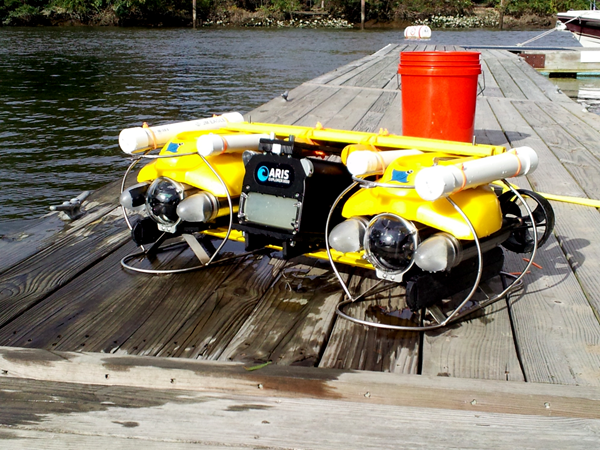 Click here to view full PDF article
Click here to view full PDF article
For over thirty years, Mark Klein has worked as Project Manager at S.T. Hudson Engineers Inc. in New Jersey, developing scope, writing proposals and conducting inspections.
As a consultant, he and his team work with a wide range of clientele, from Industrial and Municipal owners of docks and water supply systems to supporting contractors in underwater and marine related construction and dredging projects.
The Hudson Engineers’ team often conducts work in low visibility waters. In a recent interview with Sound Metrics, Klein mentions that they are faced with “challenging situations that require unique or cost-effective solutions to improve data collection and provide safety.”
“[We help] supporting owners and contractors to better understand situations that are not easily reached by traditional methods,” Klein continues. “The ARIS [Explorer] 3000 provides reliable and robust solutions to help communicate real time conditions.”
However, sonar technology and other tools are not the traditional choice during an inspection.
“Ninety percent of the time, these tools, the ARIS especially, are not specified or people aren’t asking to use it,” Klein states. “They want to do something else. When we see it’s an easy or a good solution, it takes a lot of effort to convince people to allow us to use it. That’s quite an uphill battle for me.”
Klein likes the ARIS Explorer 3000, because it’s easy to use and offers real time images. He goes on to state, “It’s one of my favorite tools to communicate underwater conditions.”
As a certified Hydrographer, Civil Engineer and Commercial Hard Hat Diver, Klein has a well-rounded understanding of the traditional methods used in an inspection, and he and his team are always searching for ways to make the process safer and more cost effective.
“We’ve established over the years a tiered approach,” Klein says. “Sonar doesn’t replace divers in traditional methods, but truly enhances it.”
Their first-tier solution is to scan using the ARIS Explorer 3000. “Paired with other tools, it typically makes sonar data easily understandable for most clients,” Klein specifies. “The second tier would be to put divers in for verification as needed.”
In Klein’s most recent assignment, he and his team completed a detailed structural inspection at a nuclear power plant using the ARIS Explorer (covering areas not previously inspected with pumps in service) and came across some impressive results.
“There’s a requirement for a five-year structural inspection at every nuclear power plant or power plant, I believe, in the country,” Klein says. “Everybody completes them by different methods.”
Klein and his team were involved with the previous inspection five years ago, and with the new inspection were instructed to look at concrete and steel.
Some parts of the inspection are challenging because diver safety is always a main concern, and pumps are required to be shut down (which is very expensive), so Klein and his team decided to take a different approach.
With the pumps still running, Klein states, “We actually put the ARIS in, and we could look at the walls [and] the concrete.”
They located several areas with anomalies, such as exposed rebar and cold joints, in parts were divers were unable to reach due to either currents or logistics.
“We were able to add reproducibility and reliability into inspections,” Klein mentions. “Results were very impressive. We saved time [and] money, while improving safety and quality.”
Due to the great results, Klein alludes that “guidelines are now being reviewed for national review by the Electrical Power Industry.”